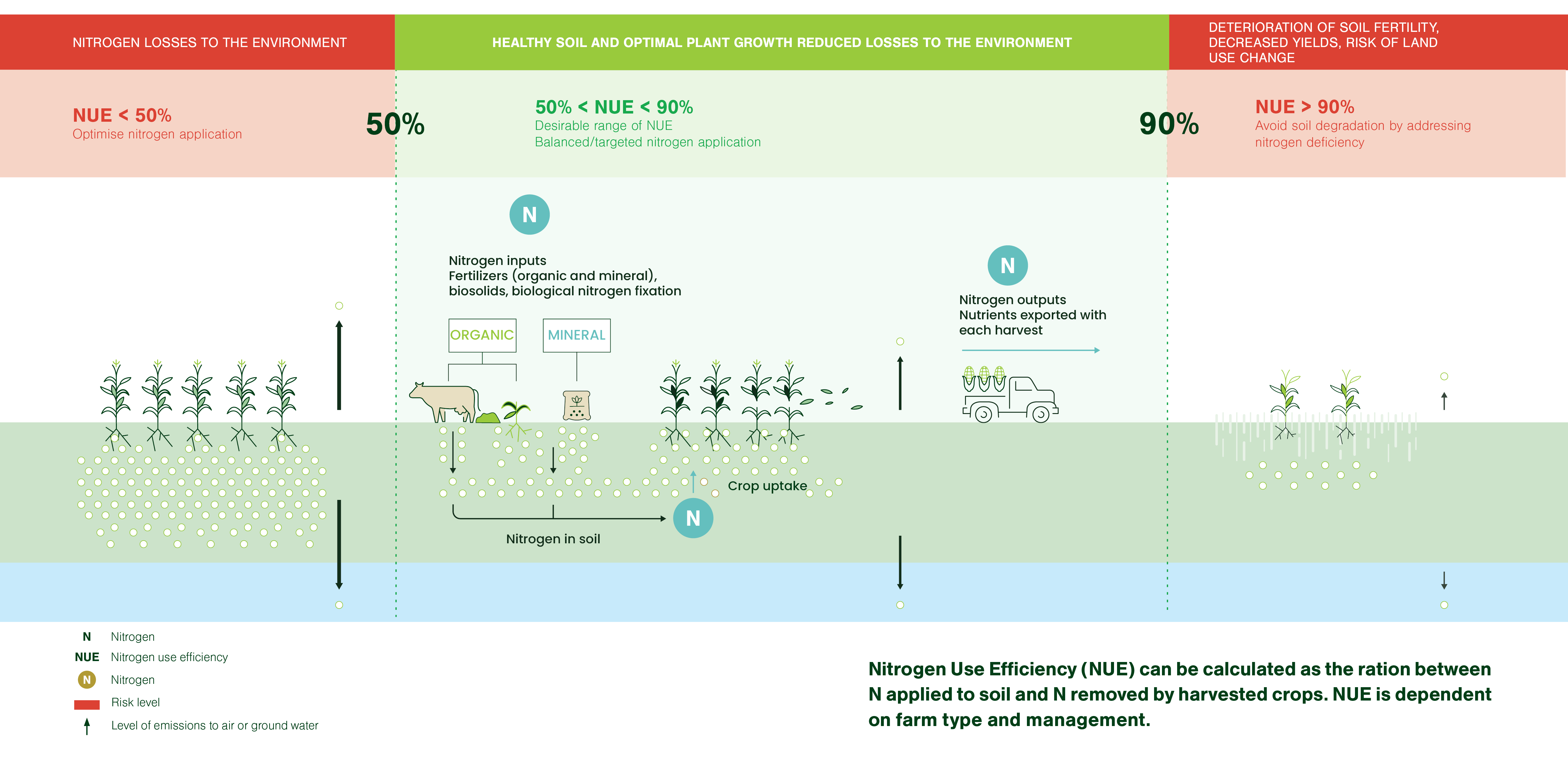EU Nitrogen Expert Panel (EUNEP)
The EU Nitrogen Expert Panel gathers key actors from the science, policy and industry communities to contribute to improving Nutrient Use Efficiency in food systems in Europe.
The panel was initiated in 2014 by Fertilizers Europe as a result of the long-term commitment of the EU mineral fertilizer industry to encourage the efficiency of fertilizer use in order to optimize plant growth and reduce environmental impact.
The EU Nitrogen Expert Panel has published a Nitrogen Use Indicator (NUE) to encourage the efficient use of nitrogen. The indicator can be used to demonstrate how different farming strategies can contribute towards improved NUE.
The Nitrogen Use Efficiency Indicator
The NUE indicator is based on nitrogen input and nitrogen output at different levels and provides information about resource use efficiency, the economy of food production (nitrogen in harvested yield), and the pressure on the environment (nitrogen surplus).
The NUE indicator considers the problems arising from both insufficient and excessive use of nitrogen. The indicator can be broken down to 3 simplified production scenarios. In each of these scenarios the NUE indicator can provide advice on farm practices on how to optimise the use of nitrogen by either addressing nitrogen deficiency or optimising its use.
The European fertilizers industry actively supports use of the indicator as good practice to improve nitrogen use in food production and it has been put forward as one of the metrics of the Farm Sustainability tool for Nutrients (FaSt) by the European Commission in its proposal for new Common Agricultural Policy.
The Farm Sustainability Tool for Nutrients aims to enable a platform for on-farm nutrient management that would help reduce ammonia and N2O emissions from the agriculture sector and improve water quality in Europe. Such a tool would compile information from satellite data, soil sampling and land parcel information and would be directly accessible to farmers in order to help them make informed decisions on nutrient requirements.

